
Best practices to scale and modernize your observability strategy
ObservabilityCON 2023 took place in London this week, showcasing all the latest and greatest trends in open source observability.
Following the opening keynote, the event featured a range of breakout sessions — led by both Grafana Labs experts and members of the Grafana OSS community — that explored observability best practices and lessons learned. Many of these sessions dialed in on a particular theme: how to scale and modernize an observability strategy using the open and composable LGTM (Loki for logs, Grafana for visualization, Tempo for traces, and Mimir for metrics) Stack.
Now, all these expert-led sessions are available on demand. So, whether you want to learn more about the emerging role of AI and machine learning in observability or are looking for ways to gain deeper insights into the end user experience, be sure to check out the following ObservabilityCON 2023 sessions on demand.
Advance your observability strategy
Building scalable OSS observability with Mimir, Loki, Tempo, and Pyroscope
In this session, members of the Grafana Labs software engineering team — including Ryan Perry, Mario Rodriguez, Ed Welch, and Vlad Diachenko — shared the latest news about the scalability and performance of the open source telemetry backends that make up the Grafana LGTM Stack. Tune in to learn more about our newest OSS database, Grafana Pyroscope for continuous profiling, which provides insights into resource usage and latency down to the code level. Finally, find out how to correlate profiles with metrics, logs, and traces for a more holistic view of system health and performance.

Access the on-demand session here.
Panel: What we’ve learned building observability at massive scale
In this in-depth panel discussion, observability leaders from Sky, Just Eat Takeaway.com, and BlackRock shared their organization’s observability journeys, their perspectives on scaling observability across an enterprise, and their opinions on the current trends in the open source observability space.
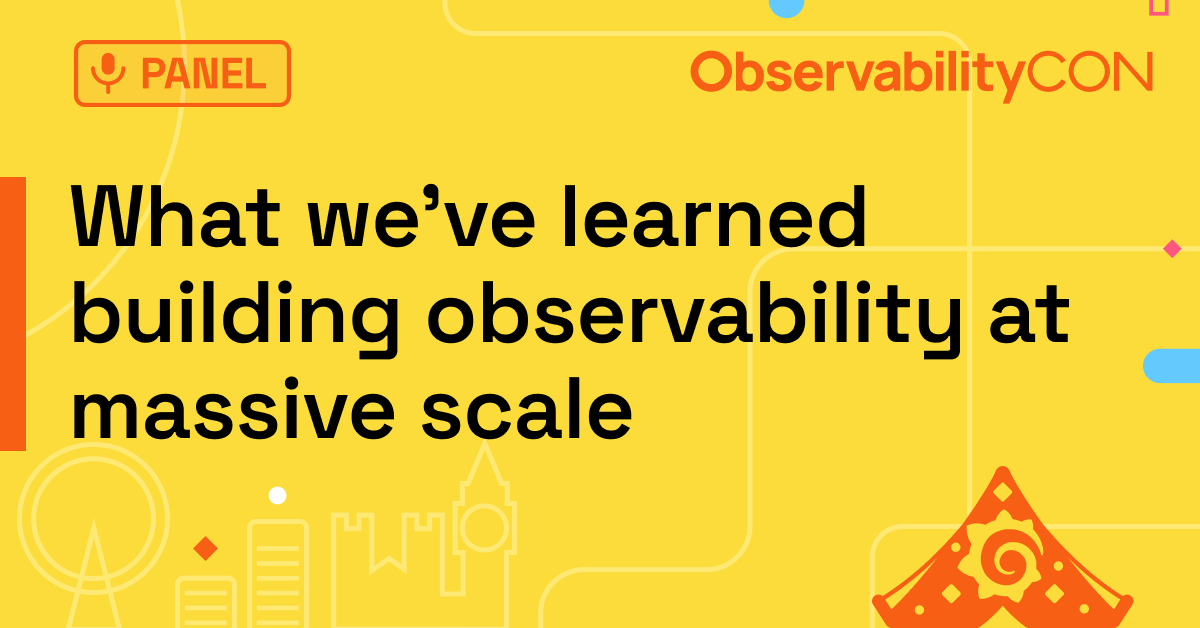
Access the on-demand session here.
How Pipedrive switched its entire observability stack to OpenTelemetry and LGTM
The cloud-based CRM company Pipedrive has been relentlessly modernizing its observability stack, first adopting Grafana visualization and Grafana Mimir for Prometheus metrics, then recently completed a migration of its distributed tracing from a third-party SaaS provider to OpenTelemetry and Grafana Tempo, and its logging stack from Graylog to Grafana Loki. Along the way, the team developed its own in-house library to include OpenTelemetry in its roughly 750 microservices. In this session, Observability Platform Team Lead Karl-Martin Karlson shared Pipedrive’s journey migrating to the LGTM Stack in an infrastructure spanning 8 data centers, 5 physical locations, and over 20k Kubernetes pods.
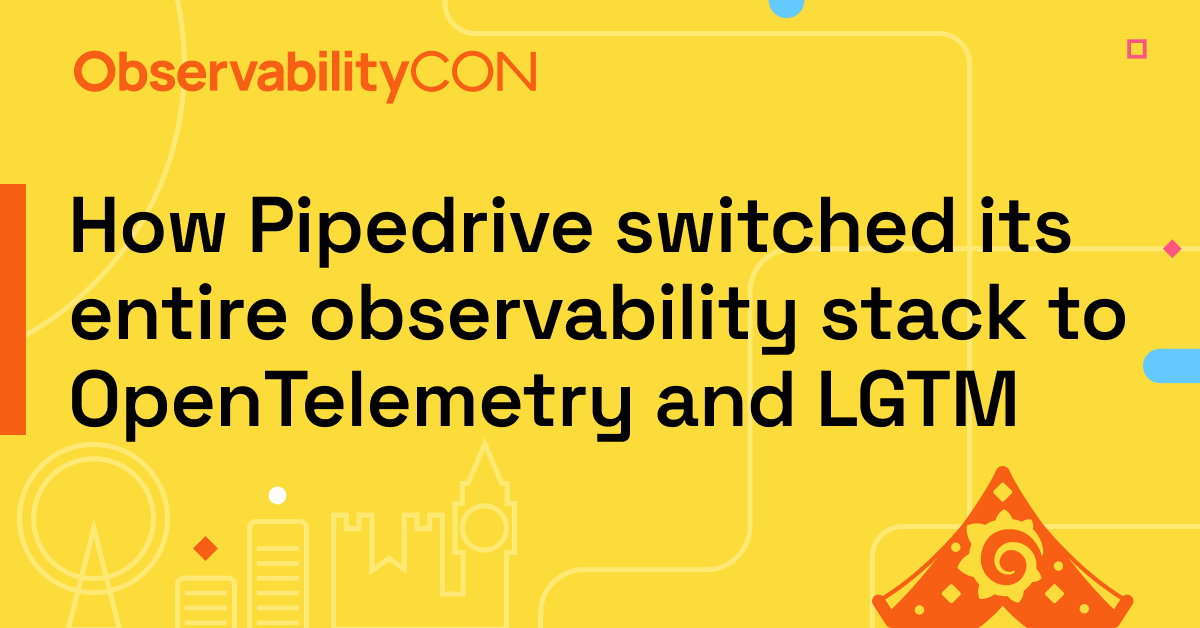
Access the on-demand session here.
How the LGTM Stack changed the observability culture at Wise Payments
The observability team at Wise Payments — Europe’s leader in cross-border money transfers — had long provided the company’s developers access to a multitude of tools. But as costs and complexity increased, Ibukun Itimi, Engineering Lead for Observability, and Andrew Brown, Reliability Squad Lead, saw an opportunity to change not only the tools they were using, but also the observability culture. In this session, Ibukun and Andrew highlighted how the Grafana LGTM Stack has empowered their team to become more product-focused, and to shift from being external tool wranglers to providing in-house observability expertise.

Access the on-demand session here.
AI/ML + open source observability
Grafana Labs is excited about the role AI/ML can have in bridging the gap between humans and the beyond-human scale of observability data we work with every day. In this session led by Grafana Labs senior software engineers Yasir Ekinci and Ben Sully, you’ll learn about the features leveraging AI/ML that we’ve already released, what’s next, and what the future could hold. The speakers also discussed our big tent, open source approach to enabling the community to use AI/ML to power up the data sources, visualizations, and flows that you build into Grafana everywhere.
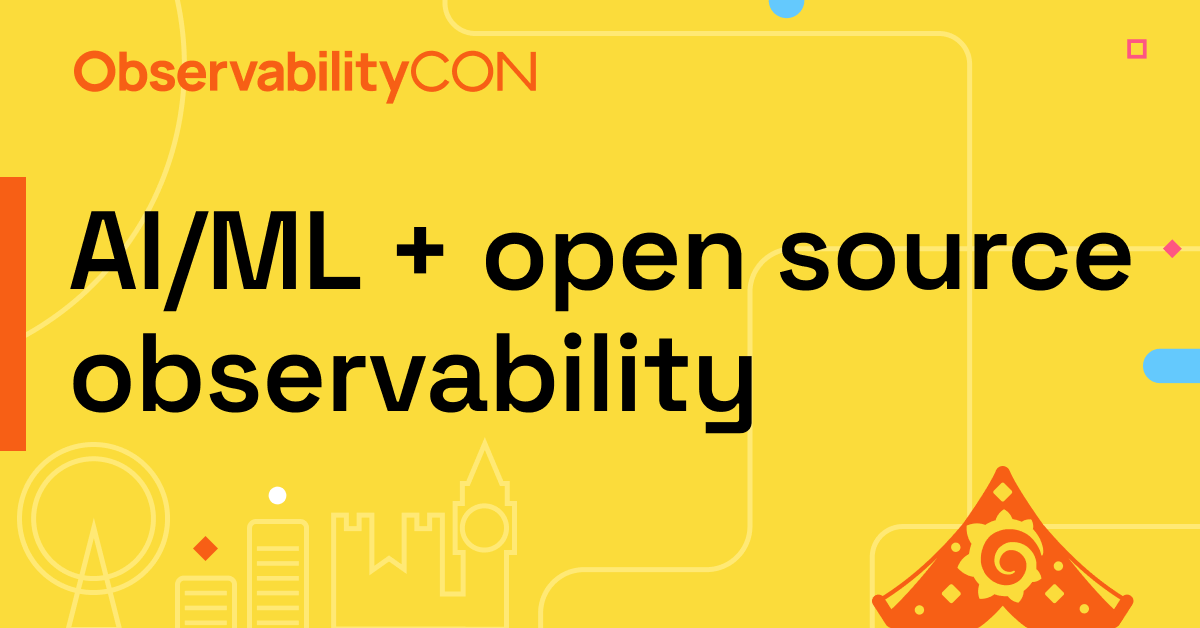
Access the on-demand session here.
How Maersk is navigating the seas of observability with the LGTM Stack
Maersk, a global leader in shipping and logistics, is forging its path to enhanced observability. To streamline operations and empower developers to take the helm in observability, Maersk embarked on a journey to consolidate tools into a centralized platform. In this session, Director of Engineering Roshith Radhakrishnan and Senior Engineering Manager for Observability Platforms Henry Kuehl unveiled how Maersk revolutionized its observability using the LGTM Stack, complemented by Grafana Faro for real user monitoring (RUM).
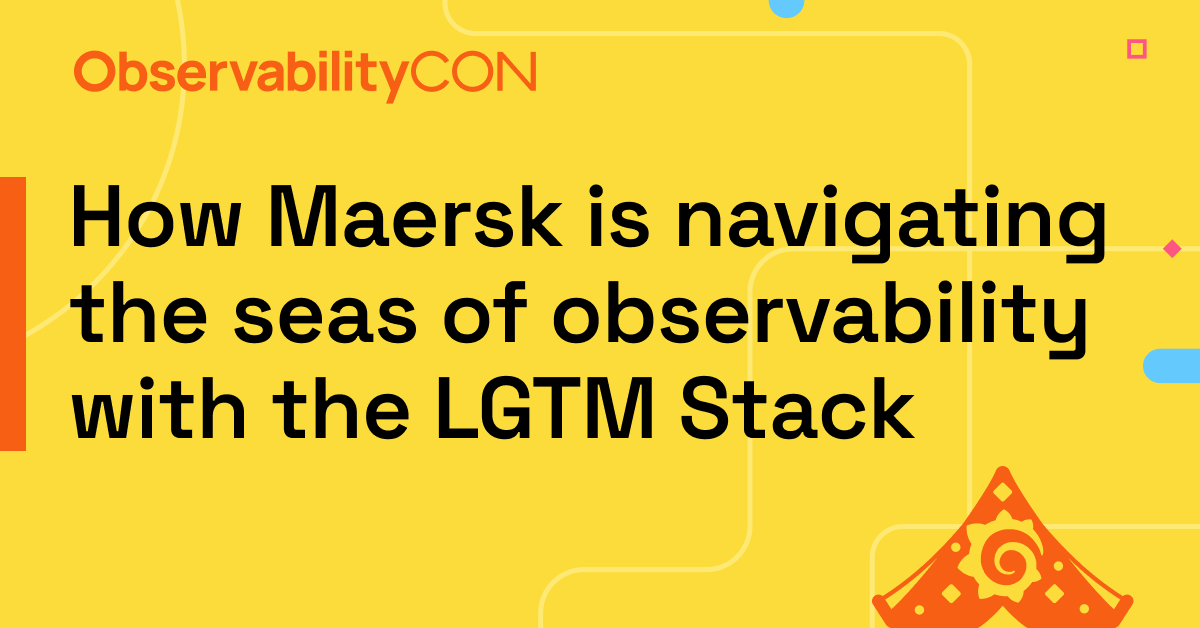
Access the on-demand session here.
User-centered observability: load testing, real user monitoring, and synthetics
Understanding your end users’ experience with your applications and services is critical, and there are a variety of tools to help. But there are also a number of different use cases: During development or in production? Simulate user behavior or monitor real user behavior? What should you use and when? In this session, Grafana Labs Senior Product Manager Mark Meier and Senior Software Engineer Elliot Kirk explored when and how to apply load testing, synthetic monitoring, and real user monitoring to gain insights into the end user experience of your critical applications.
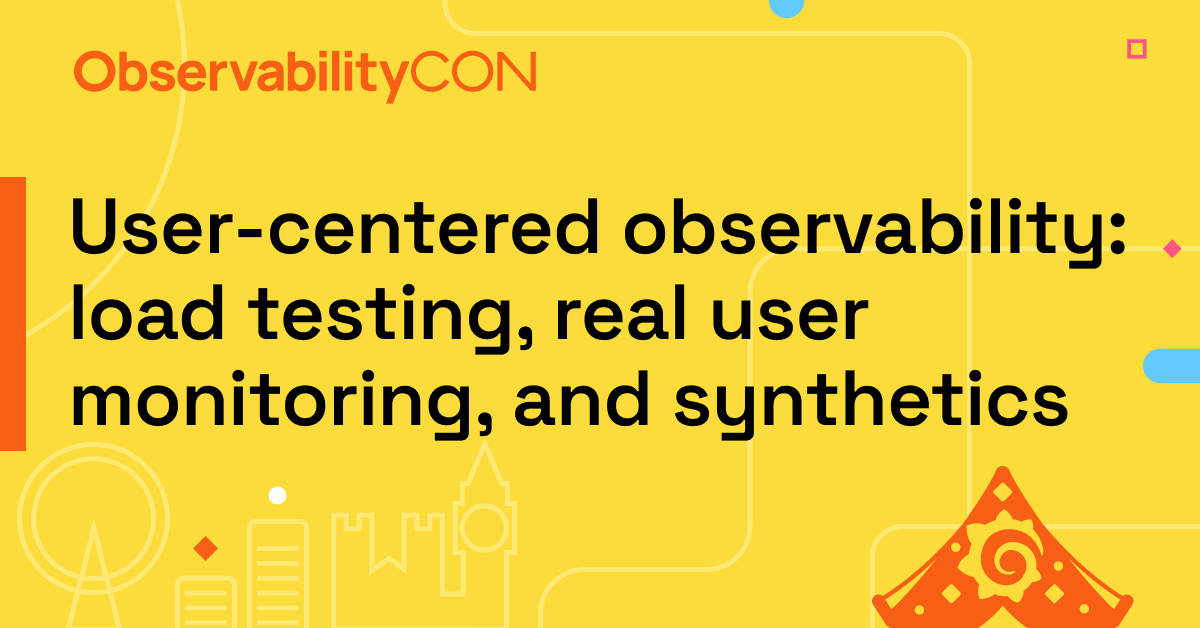
Access the on-demand session here.
To see the full line-up ObservabilityCON 2023 on-demand sessions, visit the event website. And if you haven’t already, be sure to check out the ObservabilityCON 2023 keynote to learn more about all the major Grafana Labs announcements — including the general availability of Application Observability, the release of Grafana Beyla 1.0, and our acquisition of Asserts.ai — from the event.
Interested in more ways to connect with Grafana Labs? Visit our events page to see upcoming in-person and virtual opportunities.



